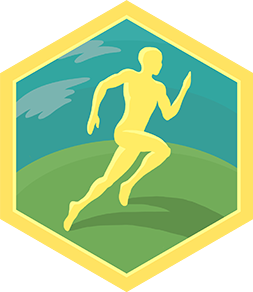Swim a Freestyle
Learn and practice basic freestyle swimming technique: body position, breathing, arm strokes, and flutter kick while swimming laps with adult supervision in a pool.



Step-by-step guide to swim freestyle
Learn To Swim Freestyle | A Simple Step-By-Step Guide
Step 1
Gather your materials and put them on the pool deck where you can reach them easily.
Step 2
Put on your swimsuit so you are ready to swim.
Step 3
Put on your goggles so your eyes stay comfy underwater.
Step 4
Do a short warm-up on the pool deck by swinging your arms and marching in place for one minute.
Step 5
Walk into the pool with your adult and go to the shallow area your adult says is safe.
Step 6
Take a gentle push off the wall and glide face down with your arms stretched forward for about five seconds to feel a straight body line.
Step 7
Hold the kickboard and practice a steady flutter kick from the hips for 20 meters or for 30 seconds.
Step 8
Float on your stomach and practice six slow freestyle arm pulls with one arm while the other arm stays extended; switch arms and repeat.
Step 9
Practice side breathing by turning your head to the side, taking one quick breath, and blowing bubbles underwater five times.
Step 10
Swim 10 meters of freestyle using side breathing every three strokes while keeping your body flat and your kicks steady.
Step 11
Rest at the wall and take a drink of water to stay hydrated.
Step 12
Swim another lap focusing on one thing you want to improve (body position or kick or breathing).
Step 13
Cool down by floating on your back calmly for 30 seconds.
Step 14
Share your finished freestyle practice and what you learned on DIY.org.
Final steps
You're almost there! Complete all the steps, bring your creation to life, post it, and conquer the challenge!


Help!?
What can we use if we don’t have a kickboard or goggles?
If you don’t have a kickboard, use a pool noodle or a flat piece of foam to hold while practicing the 20-meter flutter kick, and if you lack goggles use a swim mask or practice brief face dips during the side-breathing drills.
I can’t keep a straight body line during the five-second glide—what should I do?
If you struggle with the five-second face-down glide, push off the wall a bit firmer, stretch both arms fully forward, tuck your chin slightly, and repeat short glides from the wall until you feel balanced.
How can I change the activity for younger or older children?
For younger children shorten the kickboard drill to 10–15 seconds and stay in chest-deep water with an adult holding during the gentle push-off and side-breathing practice, while older kids can extend the 20-meter kick to 50 meters, add fins, or make the second lap a timed set to focus on improvement.
How can we make the practice more fun or track progress?
To extend and personalize the session set a measurable goal for the second lap (for example fewer kicks per stroke), try fins or a tempo aid during the 20-meter kick, video a lap to review technique, and then share what you learned on DIY.org.
Watch videos on how to swim freestyle
How to Swim in 4 Steps | Basic Freestyle Swimming for Beginners
Facts about swimming for kids
⏱️ Elite swimmers can finish 100 m freestyle in under 50 seconds — swimming can be amazingly fast!
🐬 A good streamline and body position can make you glide farther with each kick — just like a dolphin cutting through water!
🏊 Front crawl (the usual freestyle) is the fastest of the common swim strokes — that's why it's used in freestyle races!
🌬️ Learning to breathe every few strokes (and trying bilateral breathing) helps keep your body balanced in the water.
🔥 Swimming works your whole body and is gentle on joints; 30 minutes can burn lots of energy while being safe for growing kids.
How do I teach my child to swim freestyle?
What materials do I need to practice freestyle with my child?
What ages is freestyle swimming suitable for?
What are the benefits and safety tips for children practicing freestyle?


One subscription, many ways to play and learn.
Only $6.99 after trial. No credit card required



